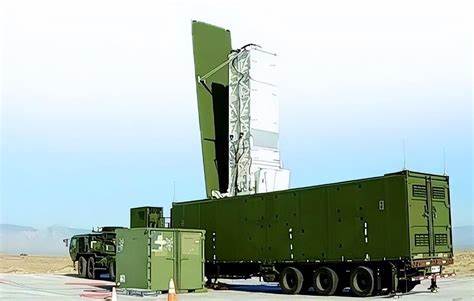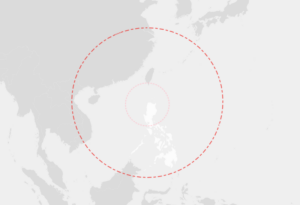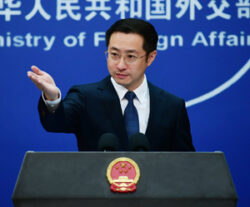China urges PH to stop going down ‘the wrong path’

THE People’s Republic of China continues to be patient in expressing its serious concern over its deteriorating relationship with Manila, this time highlighted by the declaration of Defense Secretary Gilberto ‘Gibo’ Teodoro that the Philippines plans to buy an American offensive missile system instead of shipping it back to the United States as announced earlier.
In an interview with the ‘Financial Times’ (FT), a Western mainstream media (MSM) last November 10, Teodoro said the Armed Forces of the Philippines (AFP) intends to purchase the ‘Typhoon’ missile system.
“We do intend to acquire capabilities of such sort. We will not compromise with our right to acquire any such kind of capabilities in the future within our territory,” said Teodoro as quoted by FT.

The same information was repeated by ‘Newsweek,’ another Western MSM, in a separate article last November 14, also quoting Teodoro.
The Typhon, which has four launchers, is among the three ground-based missile systems of the U.S. Army, which also include the High Mobility Artillery Rocket System (HIMARS) and the Long-Range Hypersonic Weapon.
HIMARS is now deployed in Ukraine with Russia now telling the world the US and its Western minions are now directly involved in its war against Ukraine as the system can only be operated by Western/US military.
It can launch two types of anti-surface and anti-air missiles already used by the country’s navy: the Tomahawk (range: up to 2,400 kilometers) and the Standard Missile (SM) 6 (range up to 460 kilometers), the FT article noted.
Reacting to Teodoro’s decision, Newsweek quoted Lin Jian, a spokesperson from the Chinese Foreign Ministry as describing the development as “provocative and dangerous.”
“Such a move is provocative and dangerous, and it is an extremely irresponsible choice to its own people and people of all Southeast Asian countries, to history, and to regional security,” Lin Jian said.
An illustration by Newsweek showed the Typhoon, if armed with a Tomahawk cruise missile, can hit all reefs and islands in the disputed parts of the South China Sea in the western side of the country, up to the coastal cities of mainland China in the north, to include Taiwan.
Meanwhile, if armed with an SM 6, can reach the tip of Taiwan and pose a hazard to sea traffic as it is mainly an anti-ship missile.
The acquisition of the Typhoon, if it pushes thru, would not mean it would be operated by a Filipino crew due to its complexity and need for satellite and radar support from the US for accurate targeting, a situation similar with the HIMARS use in Ukraine.
The Typhoon system here is not under the operational control of the AFP but of the ‘1st Multi-Domain Task Force’ (MDTF) of the US Army and forms part of its ‘Strategic Fire Battalion.’
Although the FT article opined that the Typhoon would “complement” the BrahMos missile system the country procured from India, the statement is misleading as BrahMos is a purely defensive anti-ship system with a range of between 200 to 300 kilometers.

Lin Jian urged the Philippines to ‘correct its wrongdoings’ by not deciding to purchase the Typhoon and to ‘stop going further down the wrong path.’
He said the South China Sea needs ‘peace and prosperity’ and not more missile systems.
Only last September 25, China tested one of its ‘Dongfeng’ Intercontinental Ballistic Missile (ICBM), a nuclear-armed long-range missile, capable of hitting any target in the Pacific as well as the US mainland in another strong message that it is ready to thwart America’s effort to encircle China using its proxies such as Japan, the Philippines, Taiwan, and South Korea.
A separate Typhoon battery is set for deployment to Japan, expectedly by the end of 2024.
China’s ICBM test came on the same day that Foreign Affairs Secretary Enrique Manalo was again vilifying China at the UN General Assembly (Pinoy Exposé, October 16, 2024), but as usual, China’s message appears to have fallen on deaf ears among US and Filipino officials.
The deployment of the Typhoon here also caused alarm as far as Russia, with President Vladimir Putin announcing last June 28 that their presence here now forms part of Russia’s calculations in identifying targets when war with America breaks out.



Comments are closed.